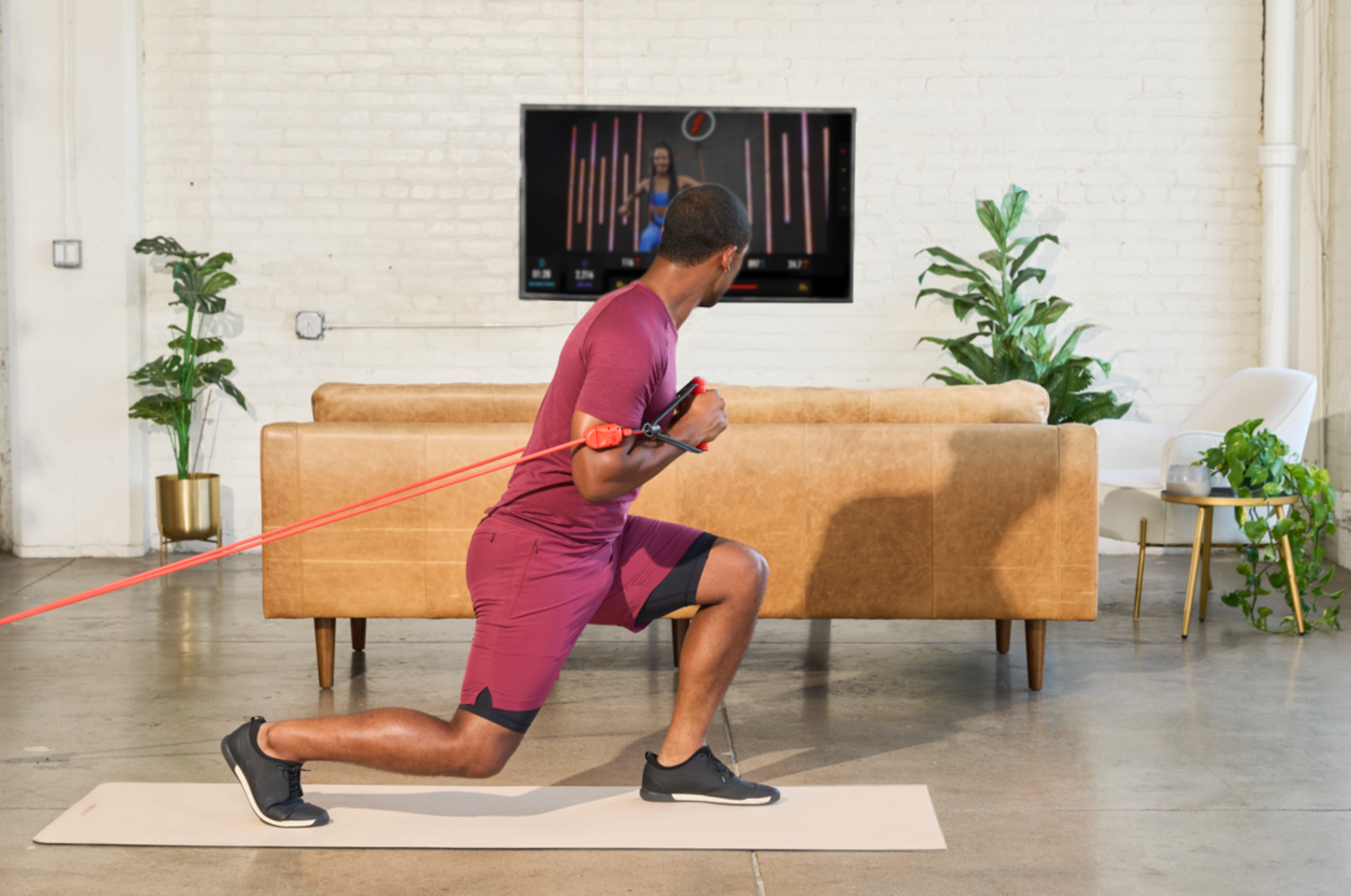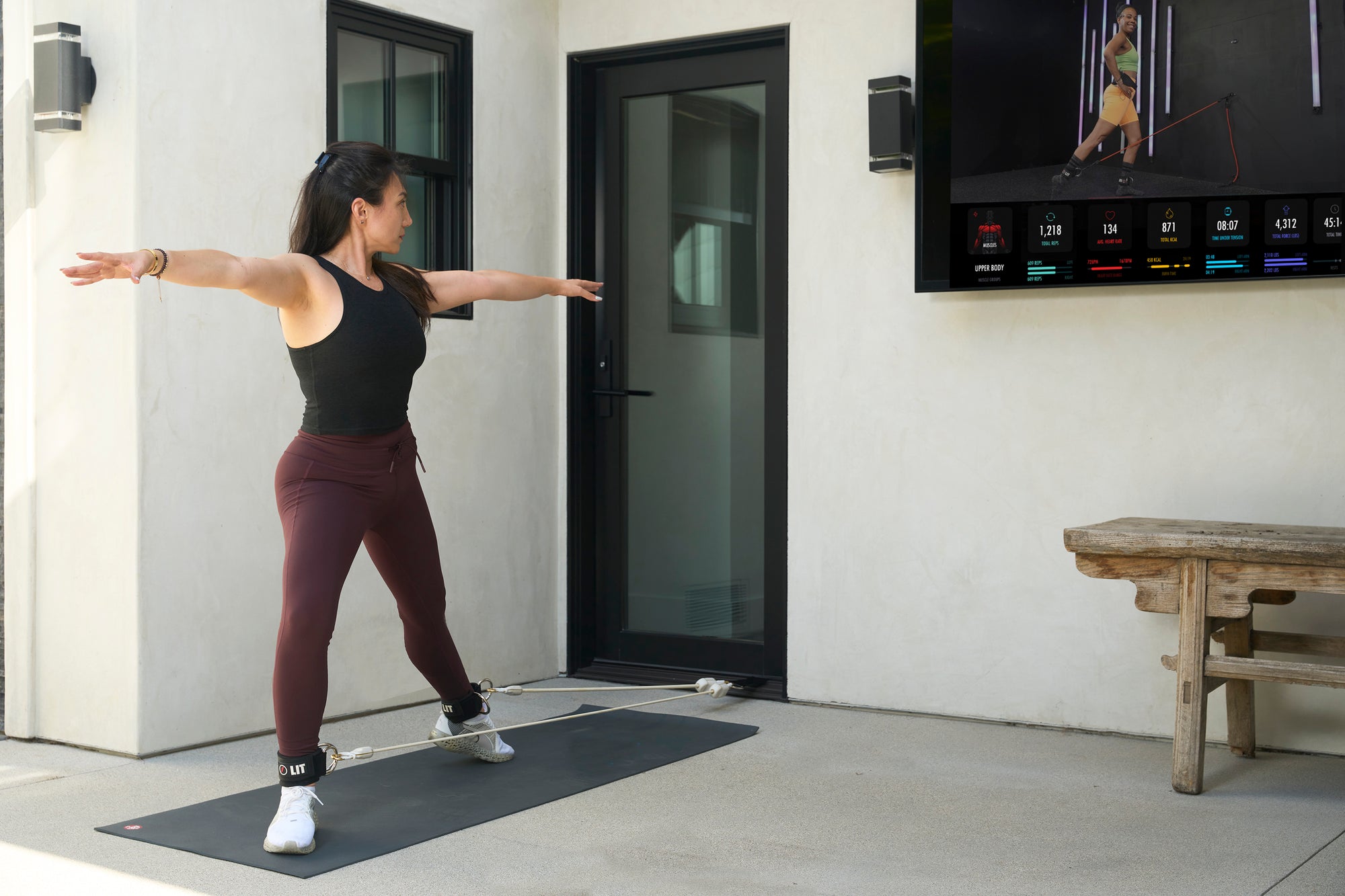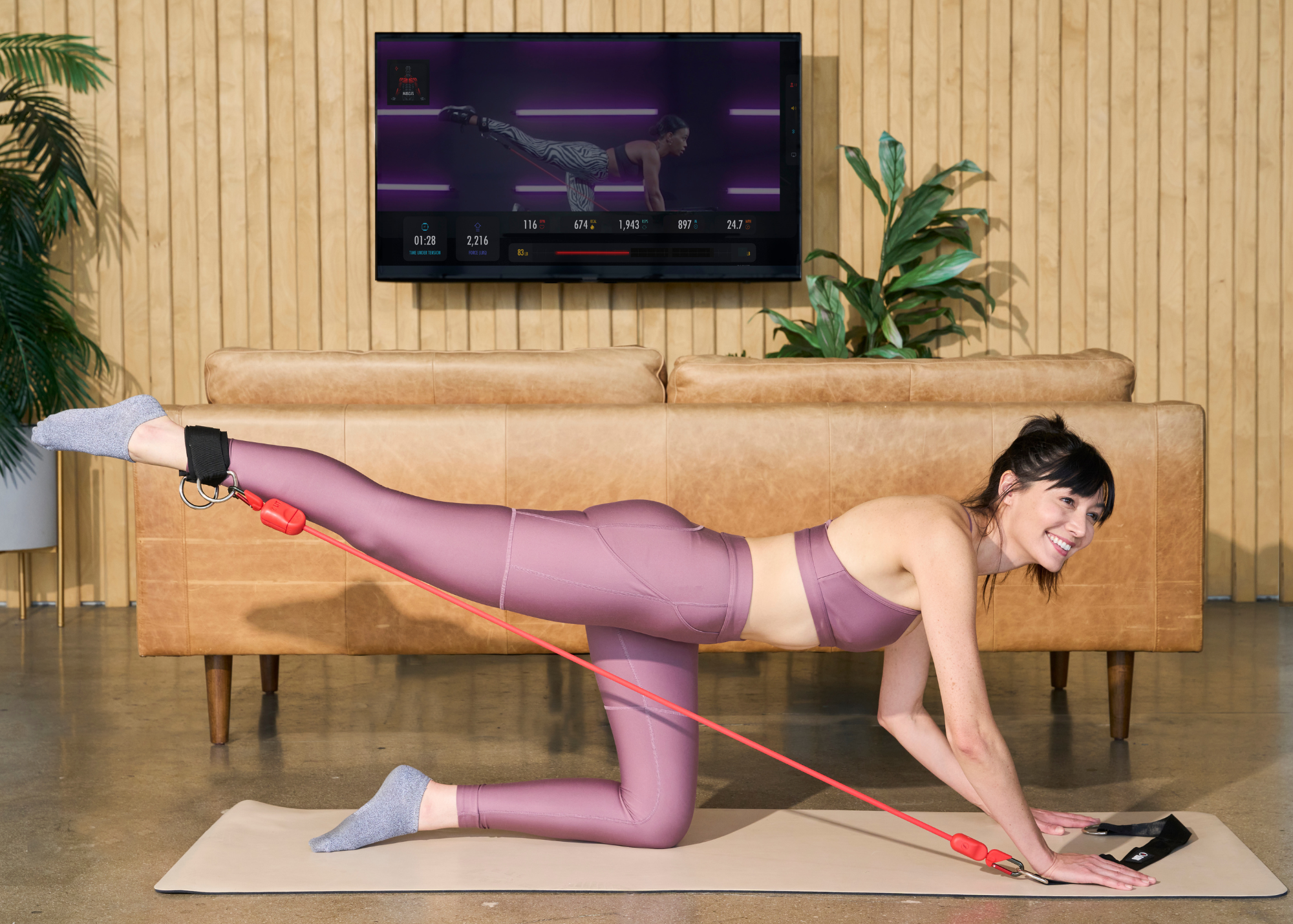Up to 23% of the world's adult population or 1 in 4 individuals suffer from chronic lower back pain. An estimated 200 billion is spent annually on management of back pain. Long hours of seated working, improper sitting & standing positions combined with a sedentary lifestyle are seen as the major contributors to back problems. The risk of developing lower back problems considerably increases as muscles weaken with age.
Proactively strengthening your lower back muscles or re-strengthening if returning from an injury or suffering from chronic back pain is thus crucial to prevent back pain and maintaining your back form in the long term .
Resistance bands are highly effective in this regard because these use resistance to strengthen the muscles through continuous loading. Resistance bands are light weight, highly versatile and easy to use. It is thus ideal for those suffering from chronic back pain, returning from injuries, older people and those averse to weights. One of the most significant benefits of performing lower back exercises with resistance bands is that they do not overly stress your back, using controlled and natural resistance to work the back muscles. With resistance band exercises, you can make develop a stronger and more flexible lower back.
Best resistance band exercises for the lower back
1. Resistance band deadlift

- Stand in the middle of the resistance band with your feet about shoulder-width apart.
- Lower your torso by bending your knees and hips until your upper leg is parallel to the floor.
- Firmly hold the ends of the band, keeping your arms straight.
- Stand up, driving your heels to the floor, slowly extending your knees and hips.
- Return to the starting position by reversing the motion.
Deadlift is one of the best resistance band exercises for lower back pain. Unlike free weights, the resistance band engages more muscles in the lower back and maintains consistent resistance throughout the motion, resulting in more muscle activation.
2. Superman with Resistance Band

- Securely wrap the resistance band around both feet and lie facedown, holding the handles level with your shoulder. In this position, your heels should touch each other, your toes turned outwards, and the resistance band running along the sides of your legs.
- Keep your legs straight and engage the core by pulling your abdominal muscles in. Extend your arms in front of you as you lift your chest and legs off the floor.
- Gradually return to the starting position.
This classic Superman floor exercise variation increases muscle engagement throughout the posterior chain, including the lower back muscles.
3. Resistance band, good morning
- Stand on the band, keeping your feet hip-width apart.
- Place the band around your shoulders and hold it in front of you using your hands.
- Bend your hips, keep the back straight, and lower your torso until parallel to the floor.
- Return to the starting position contracting your glutes and hamstrings.
This lower back resistance band exercise is excellent for training the posterior chain muscles. It builds strength, stability, and flexibility of the lower back muscles.
4. Resistance band sumo deadlift

- Start by standing at the center of the resistance band with your feet shoulder-width apart.
- Lower into a sumo squat position by bending your knees and lowering your body. Keep your back straight and core engaged.
- Grasp the band with both hands at the center with an overhand grip, your palm facing down.
- Driving force from your heels, extend your hips and knees to stand up and keep your back straight as you move up.
- To complete one rep, get back to the starting position.
Sumo deadlift is a lower back stretch with bands you can incorporate into your daily routine to significantly shape and build up your lower back muscles.
5. Cat/Cow

- Place your hands and knees on the floor with your knees under your back and your abs engaged. Wrap the resistance band around your back, pinning the ends to the floor with your hand.
- Take a deep inhale, and as you exhale, round the spine up towards the ceiling, trying to push the belly button inside towards the spine.
- Move your chin down towards the chest and let the neck release; this is the cat position.
- On the inhale, arch your back and let the belly relax and loosen. As you relax your stomach, lift your head and tailbone towards the ceiling. Make sure there is no pressure on the neck. This is the cow pose.
- Continue switching between the cat pose and cow pose connected to the movement of your breath.
This exercise improves the flexibility of the spine, neck, and shoulders. It strengthens the spine and releases tension in the upper back and neck.
Looking for exercises for the entire back? Check out our resistance band back exercises article created by LIT Fitness Trainers that will help you to strengthen and sculpt your back.
Benefits of exercising lower back with resistance bands
A resistance band workout for the lower back offers several benefits for strengthening and improving the flexibility of the lower back. Several studies support the effectiveness of lower back resistance band exercises.
A study published in the Journal of Strength and Conditioning Research found that participants who performed lower back resistance exercises had significantly increased lower back muscle strength compared to other participants.
Improved flexibility is another benefit of using a resistance band for a lower back workout. The bands make the exercises low-impact, which means they are gentler on the joints. The Journal of Physical Therapy Science published a study that found that resistance band exercises can improve the flexibility of the lumbar spine, which can help reduce the risk of lower back pain.
Resistance band stretches for the lower back help improve posture by improving the strength of muscles that support the spine. It also provides you the power to lift more weight. For adults, it means enhanced postural control that reduces the risk of falls.
Research has shown that resistance band exercises result in increased activation of muscles. Lower back resistance band exercises increase muscle activation compared to traditional weightlifting exercises. The expanded muscle activation results in more significant strength gains and improved performance.
How do I choose the right resistance band for lower back exercises?
The best resistance band for lower back exercises is the one that provides ample support to movements while maintaining consistent resistance throughout the movement.
For most lower back resistance band exercises, loop bands are ideal. However, you should use a set of resistance bands that offer varying resistance to increase resistance as your body adapts to the workout.
~[[lit-axis-cherry]]
A problem with conventional resistance bands is their need for more accurate resistance monitoring. Also, it is not easy to identify any muscle imbalance with resistance bands. LIT Method overcame these challenges by creating the LIT AXIS smart resistance band system.

LIT AXIS is an innovative resistance band system that brings smart device technology to the resistance bands. With built-in Bluetooth sensors, these resistance bands can monitor your reps, resistance loads, and time under tension. Furthermore, an injury-proof approach to building lower back strength can also watch muscle imbalance.

If you want to take your resistance band workout for your lower back to the next level, try LIT AXIS, which will customize your workouts based on your goals and metrics. LIT Method offers thousands of on-demand classes and custom programs to LIT AXIS users.
Tips for back exercises with bands
- Pay attention to your hand and "elbow" position. Many people think the hand movement and position work out the back muscles, but it's the elbow.
- Focus on the full range of motion. One of the benefits of using resistance bands for back exercises is that they don't limit the range of motion like free weights and machines.
- Ensure you keep your spine straight when you use heavy resistance. The spine naturally rounds under heavy resistance, but you must keep it straight to avoid putting pressure on the lumbar discs.
Conclusion
Working your lower back muscles is essential not just for strength but also for everyday life. Stronger lower back muscles support the spine and core, which improves your posture. With lower back resistance band exercises, you can improve muscular strength and endurance across multiple muscles on your back.
FAQs
1. Can resistance band exercises help with lower back pain?
Yes, studies have shown that resistance band exercises can effectively reduce lower back pain in patients with chronic pain.
2. How many times a week should I do lower back resistance band exercises?
For most people, 2–3 times a week of lower back band exercises are ideal. It would help if you aimed to do 2–3 sets of 12–15 reps of the above-mentioned resistance band exercises for the lower back. Maintain a gap of 45–60 seconds between each exercise.
3. Are resistance band exercises safe for people with lower back injuries?
Yes. Resistance bands make lower back exercises low impact. This is why physiotherapy uses bands to recover from injuries and trauma.
4. Can resistance band exercises replace weight training for the lower back?
Yes. According to a clinical study, resistance band training can promote similar strength gains to conventional training.





